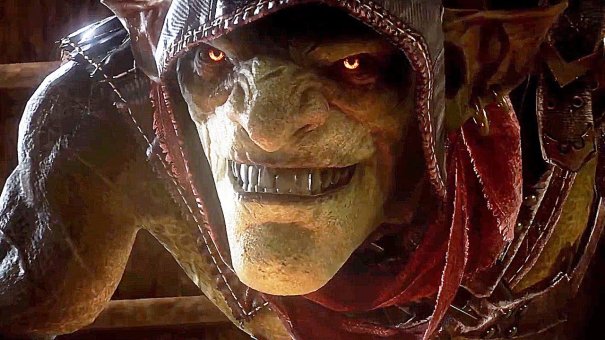Styx, the goblin and star of Styx: Shards of Darkness, is proof that not all heroes video game lead characters need to be overpowered space marines or covert operatives with high-tech gadgets up the wazoo.

He’s no oil painting but Styx is a likeable enough character, despite the rough edges.
Some heroes, in fact, can be green, pointy eared, foul-mouthed goblins who work for whoever is offering the most gold, like to vomit poison into someone’s food and that can conjure up a clone of themselves pretty smartly.
In some weird, twisted way, I enjoyed being a goblin for a change, rather than the usual character we get to play in stealth games, like Sam Fisher or, I guess, Ezio from the Assassin’s Creed series. Styx is a goblin with attitude and the game isn’t afraid to take a jab at other stealth games or have a bit of fun.
A sequel to Cyanide Studio’s 2014 game featuring the same character, which I didn’t play, Styx is a master thief: Able to get anything, from anywhere, but this time, he must infiltrate a dark elven city to find out why dark elves have formed an alliance with dwarves.
At one point, when Styx is on a roof top, he quips where is the bale of straw for him to jump into, which is clearly a dig at the Assassin’s Creed series. One post-death animation shows Styx’s arm descending into water, a la Terminator, but instead of giving a thumbs up flips the bird as it disappears. That made me smile a little.
At its heart, Shards of Darkness is a stealth game with RPG elements (there’s a skill tree that lets you use skill points to ramp up Styx’s skills) and that’s where it shines: Skulking through the shadows while observing the patrol patterns of guards, finding alternative routes to objectives, silently taking out guards then hiding their bodies in wardrobes and chests.
To be honest, Styx isn’t much when it comes to open combat and will die fairly quickly so stealth is always the best option here. If you are spotted and have to do a little melee hand-to-hand, the game has a rudimentary parry QTE which, if successful, which knock a guard off guard, allowing Styx to stab him but most of the time, hand-to-hand combat is a death sentence so this is not a game to go all out Rambo and go in through the front gate.
Thankfully, locations have plenty of places that you can use to stealth your way through to objectives, with torches that can be extinguished, barrels to hide in and ropes to climb. Enemy AI is pretty good, most of time, with guards patrolling set patterns and some re-lighting torches once they’ve noticed they were out. It made things a little more tense and I had to think about the best route to reach the end goal.
Styx: Shards of Darkness isn’t the perfect game, (but no game is) but I think it’s frustrations can be overlooked, given its price and that it’s a lot of fun.
The biggest niggle for me was the controls, which frustrated me a little, especially when I tried to escape from guards and had to take evasive manoeuvres. Sometimes what should have been a leap onto a railing then hang off that railing often turned into a leap and accidentally stand up, enabling the guards to see me, or a straight fail and Styx plummeted to his death.
 I played Styx on PC and while it’s not going to win any prizes for Best Looking PC game of the Year neither will it melt your PC with its recommended specs. Minimum recommended hardware is 8Gb of RAM, and a Radeon R7 260X or nVidia GTX560, so hardly cutting-edge hardware. I ran everything on Epic settings and my PC’s packing an nVidia Geforce GTX660Ti, a 3Gb card that some (including me) would say is past its use by date.
I played Styx on PC and while it’s not going to win any prizes for Best Looking PC game of the Year neither will it melt your PC with its recommended specs. Minimum recommended hardware is 8Gb of RAM, and a Radeon R7 260X or nVidia GTX560, so hardly cutting-edge hardware. I ran everything on Epic settings and my PC’s packing an nVidia Geforce GTX660Ti, a 3Gb card that some (including me) would say is past its use by date.
Look, if you’re a fan of stealth games and want something that has a good sense of humour and doesn’t take itself too seriously and brings the stealth back to stealth games, Styx: Shards of Darkness is well worth a look.
Thanks to Five Eight Distribution in Auckland for the review copy of Styx: Shards of Darkness